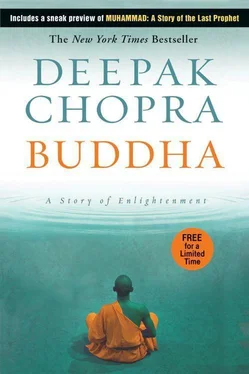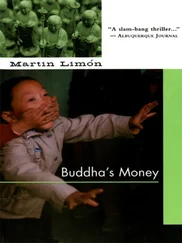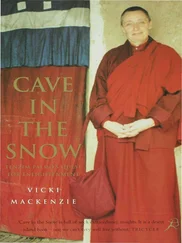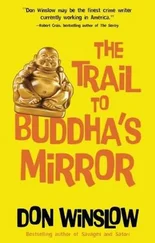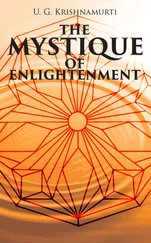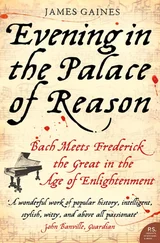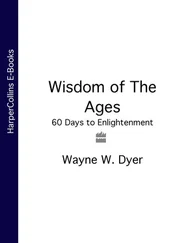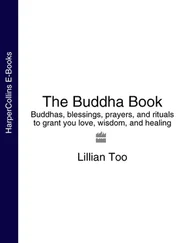“Where is he? Where is my son?”
Suddhodana followed the eyes of the men around him. Their gaze formed a path, and at the end stood Devadatta. He had dismounted. Over his tall horse, whose sides were panting from a hard ride, a body was draped. It took a second before the king recognized his son’s clothes hanging off the corpse. The head had been cut off, leaving a grisly stem.
Suddhodana recoiled in revulsion. He had no desire to come closer or to take a second look. He turned and put one foot ahead of the other until he had reached the security of his darkened rooms. The heat of the cobblestones seeped through his sandals. The old king felt it, and somehow his hot shoes stuck in his mind, the way trivial things often do, as the first thing he remembered on the long road of suffering that stretched ahead forever.
The moment Gautama stepped into the small clearing, he knew that he’d found what he was looking for. A crude thatched lean-to faced him from under the shade of an old tree. The shadows were deep, but he could see a hermit sitting in lotus position. There was no trail of footprints or telltale smoke in the air to lead Gautama to this place. He had been away from home for three months now, and he was an adept forest dweller himself. No longer did he wake up with a start in the middle of the night fearing danger from the snap of a twig. He could let his footsteps wander where they wanted to, and now here he was.
He crossed the small clearing and stood over the hermit, who could have been Asita-slender, wiry build, nut brown skin, thinning hair with a long beard. Gautama moved as silently as he could, and he didn’t speak in greeting to the old ascetic, who made no motion, not even the flutter of an eyelid, to acknowledge his visitor. Finding the shade of a nearby tree, Gautama sat under it and folded his legs. For ten years now he had been meditating, and just as Asita promised, it had become his refuge from the outside world.
At first he had found it hard to settle down completely. As the scriptures say, the mind is like a runaway coach, and the driver never stops whipping the horses. But from inside the coach a voice whispers, “Please stop.” At first the team and driver ignore the voice. It is very soft; it never insists. Over time, however, the voice wins obedience, and the driver and horses stop wildly galloping. Bit by bit they slow down until the mind is at rest. Thus Siddhartha learned a basic lesson: whatever can run can also stand still.
Gradually the tree shade moved away, and he began to sweat. He could see an orange glow in his eyelids and knew, if it was this near sunset, that hours must have passed. Gautama took a peek, but the hermit was still motionless under his lean-to. There was no guarantee that he possessed any wisdom or could be a useful teacher. But Gautama had promised himself that he would seek out someone like Asita. How can freedom be taught except by someone who is free?
Darkness descended, and still there was no sign of activity. Gautama got to his feet and headed toward a stream he’d crossed near the clearing. Stooping to drink, he realized that waiting could take longer than he’d thought. He collected some fruit from the trees and headed back to the clearing. He fashioned a bed of boughs and went to sleep. The hermit became a black outline against the nearly black night sky.
In this way three days passed. The hermit’s ability to remain as still as one of the Shiva statues outside Canki’s temple impressed Gautama deeply. His own body ached from the hours he had put in sitting and waiting for something to happen. He fidgeted, obeyed the call of nature, ate and drank when he had to. Like a force of nature, the wiry old man remained immobile. Once or twice Gautama gave a soft cough to make his presence known. On the second day he ventured to say “Namaste” in a quiet voice. On the evening of the third day, he walked over to the ascetic, squatted on his heels beside him, and said, “Sir?”
The hermit opened his eyes. “You talk too much,” he said. His voice was clear and alert; the trance he was waking up from was no ordinary kind.
“Can you teach me?” Gautama asked, wanting to seize the moment before the hermit retreated back into his deep samadhi once more. But he was too late. The hermit closed his eyes, and soon the sun set. Gautama stretched out on the ground for the night, having no idea if he’d made any progress. Apparently he had. When he woke up the next morning the hermit was standing over him.
“Maybe,” the hermit said.
Gautama sprang to his feet. “What shall I do first?”
“Be quiet.”
The hermit went back to his place under the lean-to and resumed his meditation. Gautama suspected that he wouldn’t open his eyes for another three days. It took four. In the meantime, however, the new disciple wasn’t bored. Gradually he began to be filled with his teacher’s presence. It happened invisibly. Gautama was obliged to meditate along with his master. Imitating the guru was the main path for a disciple: you ate when the guru ate, slept when the guru slept, listened when the guru spoke. Yet the greatest teachers, so Siddhartha had been told when he interrogated visitors to court, taught in complete silence.
Apparently Gautama had run into one of those, for whenever he closed his eyes, something new would happen. He found stillness, as before, but now it was vibrant and alive, as if a shower of sparkling white light were falling inside him. Its effervescence caused his body to tingle gently, a delicious sensation that made it effortless to sit in meditation for hours at a time. In between, when Gautama found that his limbs were too stiff and his body too restless to sit any longer, he puttered around the clearing, sweeping away debris, placing a gourd of water beside his master, gathering fruit and firewood for the night. He was eager to ask the hermit how he managed to enter a disciple and fill him with his presence. Then he remembered his master’s rebuke about talking too much. On the evening of the fourth day the hermit surfaced from his samadhi.
His first word was, “Well?”
Gautama prostrated himself at the hermit’s feet. He could have said, “I am satisfied,” but his gesture of obeisance was enough. His teacher had given him a taste of all that was to come, and when he said, “Well?” he meant, “Do you accept me?” The bond between a guru and a chela, or disciple, exists deep in the heart. Gautama had become so sensitized that this one word, “Well?” said everything. It said, This is how things will be. If you want praise and smiles, go to someone else. I’m not here to flatter you.
The routine at camp was soon established. The disciple performed the small duties that kept the necessities of life going. Most of the time the two of them simply sat, facing each other across the clearing like two life-size icons abandoned by a sculptor in the forest. Then the face of Yashodhara began to appear in Gautama’s mind. She was smiling, and he couldn’t help looking at her smile. The scriptures give permission to meditate upon various divine images, so why not his wife? If love is divine, can’t a woman also be? Yet the moment Gautama fixed his mind’s eye on Yashodhara’s face, her body appeared, and it was not clothed. The young monk squirmed, praying that his master didn’t see the physical reaction this caused, which wasn’t his fault.
He fought his reaction. Meditating on arousal wasn’t in the scriptures. Yashodhara’s face changed; it began to mock him. Her hands moved down her body. He fought harder. Perhaps if he focused on the purity of his love for her. Gautama thought about the day he chose her to be his wife. She was sixteen, he was nineteen. He had given up on finding Sujata but was far from losing her memory. When it was announced that he was to be betrothed, eager fathers drove a long distance to present their daughters in faraway Kapilavastu. Nobles, princes, and kings of neighboring domains crossed the border with elaborate entourages of slaves and horses. Siddhartha sat on the ramparts looking down at the scene with Channa.
Читать дальше
